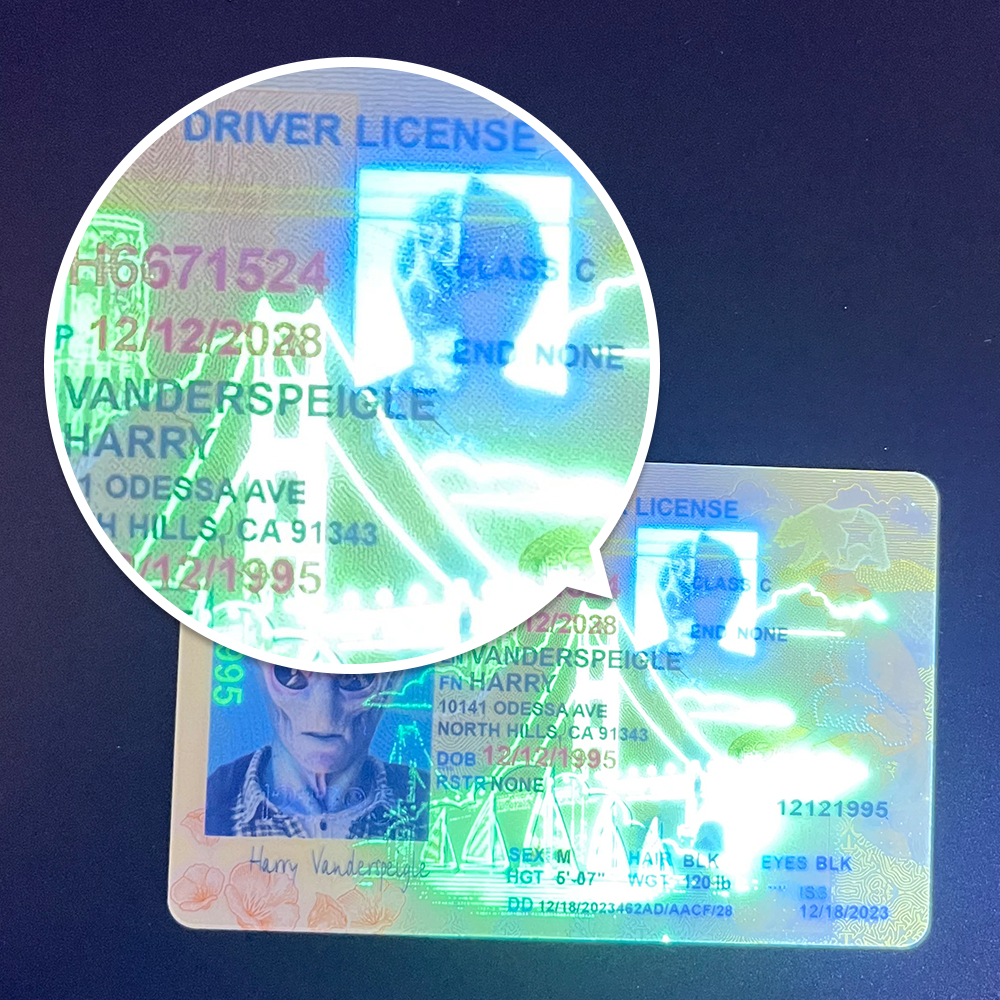In the healthcare industry, accurate patient identification is of utmost importance. It serves as the cornerstone for ensuring the safety, quality, and effectiveness of medical care. In the year 2025, the issue of fake IDs poses a significant threat to this critical aspect of healthcare operations. Fake IDs can range from forged driver’s licenses used to obtain medical services under false pretenses to fabricated insurance – related identities that can disrupt the entire healthcare billing and service – delivery ecosystem.
The Scope of the Fake ID Problem in 2025
With the advancement of technology, the production of fake IDs has become more sophisticated. In 2025, counterfeiters are likely to be using high – end printing techniques, holographic imitations, and even digital manipulation to create IDs that are difficult to distinguish from genuine ones. These fake IDs can be used by individuals for various reasons, such as accessing restricted medical treatments, avoiding high – cost medical bills by using someone else’s insurance, or even for illegal drug – seeking behavior.

One area where fake IDs can have a significant impact is in telemedicine. As telemedicine has become more prevalent in the post – pandemic era, verifying the identity of patients remotely has become a challenge. A patient using a fake ID in a telemedicine consultation can lead to misdiagnosis, inappropriate treatment recommendations, and potential legal issues for healthcare providers.
Impact on Patient Safety
When a patient presents a fake ID, it can lead to a cascade of errors in medical records. Incorrect patient information can result in the wrong medications being prescribed, inappropriate diagnostic tests being ordered, or even incorrect surgical procedures being carried out. For example, if a patient with a fake ID has a pre – existing medical condition that is not accurately recorded due to the false identity, the healthcare provider may not be aware of potential drug interactions or contraindications. This can put the patient’s life at risk.
Moreover, in emergency situations, accurate patient identification is crucial. If a patient with a fake ID is brought to the emergency room and their true medical history cannot be verified, it can delay the provision of life – saving treatment. In some cases, this delay can be the difference between life and death.

Financial Impact on the Healthcare Industry
Fake IDs also have a significant financial impact on the healthcare industry. Insurance fraud is a major concern when it comes to fake IDs. When individuals use fake insurance – related identities to receive medical services, it leads to inflated insurance claims. Insurance companies, in turn, may increase premiums for all policyholders to cover these fraudulent losses. This not only affects the financial health of insurance companies but also makes healthcare more expensive for the general public.
Healthcare providers also bear the brunt of the financial impact. They may have to write off unpaid bills from patients who used fake IDs to receive services. Additionally, the cost of investigating and dealing with suspected cases of fake ID usage adds to their operational expenses. This can strain the resources of healthcare facilities, especially smaller clinics and hospitals that may not have the financial means to absorb such losses.
Legal and Regulatory Challenges
The use of fake IDs in the healthcare industry is a clear violation of laws and regulations. However, enforcing these laws can be a challenge. Identifying and prosecuting individuals who use fake IDs is a complex process that requires coordination between law enforcement agencies, healthcare providers, and regulatory bodies. In 2025, with the increasing complexity of fake ID production and the digital nature of many healthcare transactions, it has become even more difficult to track down and prosecute those involved in fake ID – related crimes.
Regulatory bodies also face the challenge of keeping up with the evolving technology used in fake ID production. They need to continuously update their regulations and guidelines to ensure that healthcare providers have the necessary tools and procedures in place to detect and prevent fake ID usage. This requires a significant investment of time and resources.
Solutions to the Fake ID Problem in the Healthcare Industry
Enhanced Identity Verification Technologies
One of the most effective ways to combat fake IDs is through the use of advanced identity verification technologies. Biometric identification methods, such as fingerprint, iris, and facial recognition, can provide a high level of accuracy in verifying a patient’s identity. In 2025, these technologies have become more accessible and affordable, making them a viable option for healthcare providers of all sizes. For example, many hospitals are now implementing facial recognition systems at their entrances to verify the identity of patients and staff.
Another technology that can be used is blockchain – based identity management systems. Blockchain offers a secure and decentralized way to store and manage patient identities. It can prevent identity theft and fraud by providing an immutable record of identity – related transactions. Healthcare providers can use blockchain to verify a patient’s identity in real – time, ensuring that only legitimate patients receive medical services.
Improved Staff Training
Healthcare staff play a crucial role in detecting fake IDs. Therefore, it is essential to provide them with comprehensive training on how to identify and handle suspected cases of fake ID usage. Training should include recognizing the signs of a fake ID, such as inconsistencies in the photo, font, or holographic elements. Staff should also be trained on the proper procedures to follow when they suspect a fake ID, including reporting the incident to the appropriate authorities.
Regular refresher courses can also be beneficial to keep staff updated on the latest trends in fake ID production and detection techniques. By having well – trained staff, healthcare providers can increase their chances of detecting fake IDs and preventing related fraud and safety issues.
Collaboration between Stakeholders
Addressing the fake ID problem requires collaboration between various stakeholders in the healthcare industry. Healthcare providers, insurance companies, law enforcement agencies, and regulatory bodies need to work together to share information and resources. For example, insurance companies can provide healthcare providers with data on known cases of insurance fraud, which can help them identify potential fake ID users. Law enforcement agencies can assist in the investigation and prosecution of individuals involved in fake ID – related crimes.
Regulatory bodies can play a role in setting standards and guidelines for identity verification in the healthcare industry. They can also monitor compliance and impose penalties on healthcare providers who fail to implement adequate identity verification measures. By working together, these stakeholders can create a more secure and fraud – free healthcare environment.
Common Problems and Solutions
- Problem: False Positives in Identity Verification
Sometimes, identity verification technologies may produce false positives, flagging legitimate patients as having fake IDs. This can cause inconvenience to patients and may also lead to delays in receiving medical treatment.
Solution: Healthcare providers should have a clear and efficient appeals process for patients who are wrongly flagged. Additionally, identity verification systems should be regularly calibrated and updated to reduce the occurrence of false positives.
- Problem: Resistance to Biometric Identification
Some patients may be reluctant to use biometric identification methods due to privacy concerns or fear of technology. This can hinder the implementation of advanced identity verification systems.
Solution: Healthcare providers should educate patients about the benefits of biometric identification in terms of security and accuracy. They should also ensure that proper data protection measures are in place to safeguard patient privacy. For example, biometric data should be encrypted and stored securely, and access to this data should be strictly controlled.
- Problem: High Cost of Identity Verification Technologies
Implementing advanced identity verification technologies, such as blockchain – based systems, can be costly for healthcare providers, especially smaller facilities.
Solution: The government or regulatory bodies can provide financial incentives or subsidies to encourage healthcare providers to adopt these technologies. Additionally, healthcare providers can explore cost – sharing models with insurance companies or other stakeholders to reduce the financial burden.
- Problem: Lack of Standardization in Identity Verification
There may be a lack of standardization in identity verification procedures across different healthcare providers and regions. This can lead to confusion and inefficiencies in the system.
Solution: Regulatory bodies should develop and enforce standard identity verification guidelines for the healthcare industry. These guidelines should cover aspects such as the types of identity verification methods to be used, the level of accuracy required, and the procedures for handling identity – related issues. Standardization can help create a more consistent and reliable identity verification system.
- Problem: Difficulty in Verifying Identity in Rural Areas
In rural areas, there may be limited access to advanced identity verification technologies and infrastructure. This can make it difficult to accurately verify the identity of patients.
Solution: Healthcare providers in rural areas can explore alternative identity verification methods, such as using government – issued identification cards with unique barcodes or QR codes. Additionally, efforts should be made to improve the digital infrastructure in rural areas to enable the adoption of more advanced identity verification technologies in the future.
Fake ID Pricing
unit price: $109
| Order Quantity | Price Per Card |
|---|---|
| 2-3 | $89 |
| 4-9 | $69 |
| 10+ | $66 |



